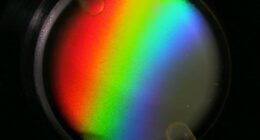Aliphatic and aromatic compounds are two distinct chemical groups with different structures, properties, and applications. Aliphatic compounds are hydrocarbons that consist of straight or branched chains while aromatic compounds have a cyclic structure containing an aromatic ring.
What are aliphatic compounds?
Aliphatic compounds are organic molecules that contain only straight or branched chains of carbon atoms. These chains can be either saturated (containing only single bonds) or unsaturated (containing double or triple bonds). Aliphatic compounds include a vast range of molecules, from simple hydrocarbons like methane and ethane to more complex structures like alcohols, acids, and amines.
One characteristic feature of aliphatic compounds is their relatively low reactivity compared to aromatic compounds. This is because the carbon-carbon bonds in aliphatic structures have greater flexibility than those in aromatic rings, making them less stable and more reactive towards other chemicals.
The physical properties of aliphatic compounds also vary widely depending on their structure. For example, straight-chain hydrocarbons tend to have higher melting points and boiling points than branched-chain hydrocarbons due to stronger intermolecular forces between molecules.
The diverse chemistry of aliphatic compounds makes them essential for many applications across various industries such as fuel production, pharmaceuticals synthesis, plastics manufacturing and many others!
What are aromatic compounds?
Aromatic compounds are a type of organic compound that contains at least one benzene ring in its structure. Benzene is a six-carbon ring with alternating double bonds, which gives it its unique properties. Aromatic compounds exhibit distinctive chemical and physical characteristics due to the delocalization of electrons in the pi system of their rings.
One significant property of aromatic compounds is their pleasant odor or aroma from which they derive their name. They have been used for centuries in perfumes, fragrances, and essential oils due to this quality.
Apart from their smell, these compounds also have several important industrial applications. For instance, benzene derivatives such as toluene and xylene are widely used as solvents for paints and coatings because they can dissolve both oil-based and water-based materials.
Moreover, some aromatics like polystyrene plastics find use in packaging industries while others including phenol are utilized extensively in manufacturing pharmaceuticals, dyes and pesticides.
Aromatic compounds offer an extensive range of benefits across different industries due to their unique properties derived from the presence of benzene rings within them.
Aliphatic compounds Vs. Aromatic compounds – Key differences
Aliphatic compounds and aromatic compounds are two broad categories of organic compounds that have distinct characteristics and properties. Aliphatic compounds, also known as non-aromatic compounds, are composed of straight or branched chains of carbon atoms. On the other hand, aromatic compounds contain a cyclic structure with alternating double bonds.
One key difference between aliphatic and aromatic compounds is their chemical reactivity. Aliphatic hydrocarbons tend to be more reactive than aromatic hydrocarbons due to the presence of polar functional groups such as halogens or oxygen in their molecules. This makes them highly susceptible to reactions such as oxidation, reduction, addition, substitution, and elimination.
Another notable difference is their physical appearance. Aromatic hydrocarbons often have distinct aromas while aliphatic hydrocarbons typically do not possess any odor unless they are mixed with impurities such as sulfur-containing chemicals.
In terms of applications, aliphatic hydrocarbons find use in solvents for paints and coatings; fuel additives; lubricants; explosives; plasticizers; surfactants; flavors and fragrances among others. Whereas aromatic hydrocarbons find application in dyes manufacturing ; pharmaceuticals production ; pesticides production ; synthetic resins making processes among others.
It’s important to understand the differences between these two types of organic chemistry because they can influence how we synthesize new materials from scratch or modify existing ones for different purposes through chemical reactions involving these classes of chemicals
The uses of aliphatic compounds
(Photo by Lucy Francesca Yanamango Veliz on Unsplash )

Aliphatic compounds have a wide range of uses in various fields. One of the most common uses is as solvents, which are used to dissolve other substances. For example, aliphatic hydrocarbons such as hexane and heptane are commonly used as solvents in laboratories for chromatography experiments.
Another use of aliphatic compounds is as building blocks or starting materials for the synthesis of more complex organic molecules. Aliphatic hydrocarbons can be converted into functional groups through chemical reactions, allowing them to be incorporated into larger molecules with specific properties and functions.
In addition, aliphatic compounds are important components in many consumer products such as paints, adhesives, and plastics. For instance, polyethylene (PE), one of the most widely produced thermoplastics worldwide, is made from alkenes derived from crude oil refining.
Furthermore, some aliphatics have medicinal applications; they play an essential role in drug development due to their ability to bind selectively with certain biological targets within our bodies.
It’s clear that aliphatic compounds have numerous applications across different industries due to their versatility and unique properties.
The uses of aromatic compounds
(Photo by Cris CL on Unsplash )

Aromatic compounds are widely used in a variety of industries due to their unique properties. One of the most common uses of aromatic compounds is in the production of fragrances and perfumes. The pleasant aroma that these compounds produce makes them ideal for use in personal care products, such as soaps, shampoos, and lotions.
Another important application of aromatic compounds is in the field of medicine. Many pharmaceuticals are derived from natural or synthetic aromatic compounds due to their ability to interact with biological receptors. For example, salicylic acid (an aromatic compound) is commonly used as an analgesic and anti-inflammatory drug.
In addition to their use in fragrances and medicine, aromatic compounds also play an important role in the production of dyes and pigments. These colorful organic molecules are often synthesized from benzene derivatives like anthracene or naphthalene.
Some types of plastics are produced using aromatic monomers like styrene or vinyl benzene. These polymers have excellent mechanical properties and can be used for a wide range of applications including packaging materials, electrical equipment casings, and automotive components.
The uses for aromatic compounds are diverse and far-reaching making them essential components across many different industries.
Why aliphatic is more reactive than aromatic?
Aliphatic and aromatic compounds differ in their structure, which leads to differences in their reactivity. Aliphatic compounds have a straight or branched carbon chain while aromatic compounds contain a ring of atoms with alternating double bonds.
The presence of multiple bonds between the carbon atoms in aliphatic compounds makes them more reactive than aromatic ones. The double or triple bonds are sites for potential chemical reactions that can lead to the formation of new molecules. In contrast, the delocalized pi-electrons around the ring in an aromatic compound make it more stable and less reactive.
Moreover, aliphatic compounds tend to be more susceptible to oxidation because they have fewer electrons compared to aromatics. This means that they are easier targets for oxidizing agents like oxygen or halogens, resulting in faster reactions.
In addition, many common functional groups such as alcohol and carboxylic acids are found primarily on aliphatic chains rather than on aromatic rings. These functional groups participate in various chemical reactions like esterification or hydrolysis making the aliphatic chains more reactive.
Due to their unique structures and composition, aliphatic compounds display greater reactivity than aromatic ones leading to different applications across various industries.
featured Image By – engin akyurt on Unsplash









